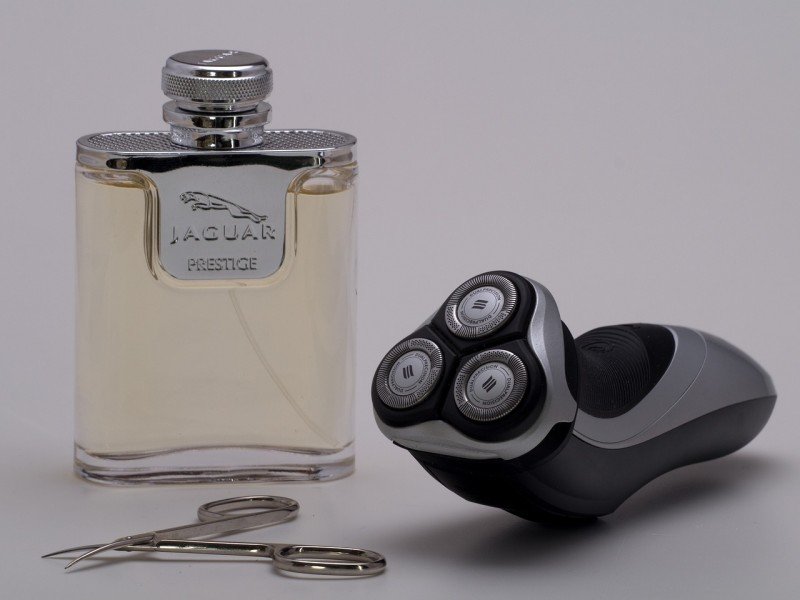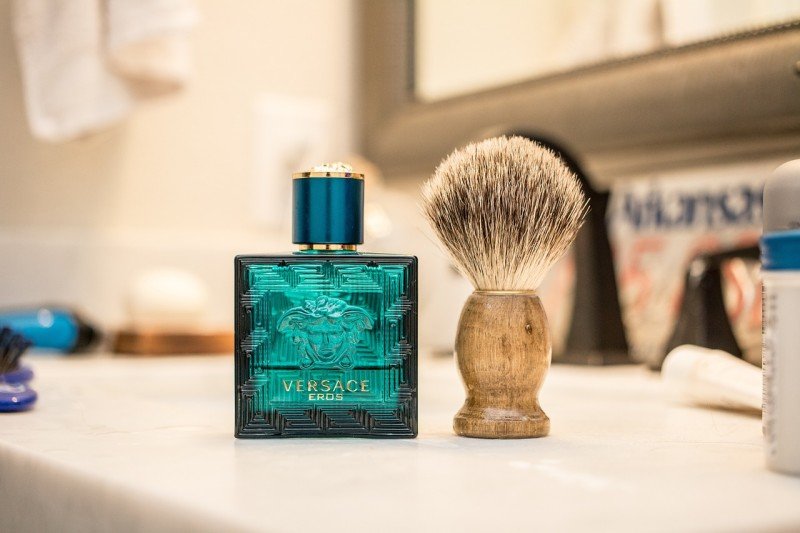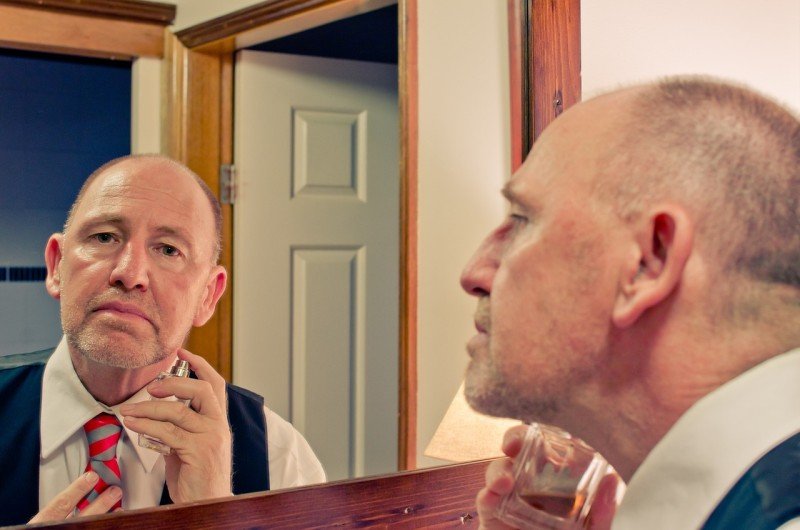If you want a really close shave, I can show you how to do it step by step. It's important because a good shave not only makes you look neat but also makes you feel great.
First, get your skin ready by washing it to remove any oil or dirt. Then, ensure your beard is soft using warm water – it'll make shaving easier. Put on the right amount of shaving cream; not too much, just enough to cover your beard.
Pick a razor that's sharp, as a dull one can pull on your hair and cause discomfort. Now, when you shave, do it carefully and with purpose, not too fast. You want to avoid cutting yourself and ensure you're shaving as close as possible. After you're done, your face should feel smooth, and you shouldn't have any razor burn or leftover stubble.
For products, use a pre-shave oil if you have sensitive skin to prevent irritation. Good shaving cream can make a big difference, and always use a fresh blade in your razor. Remember to moisturize after shaving to keep your skin healthy.
This process will give you a close shave and leave your skin feeling fresh and clean.
Key Takeaways
- Exfoliate to remove dead skin cells and soften the beard
- Use a hydrating pre-shave oil or lotion
- Apply warm water or a hot towel to the beard to hydrate and soften the hairs
- Use a sharp razor and understand the direction of facial hair growth for a close shave
Preparing Your Skin
To get ready for shaving, it's important to get my skin ready so I can avoid irritation and get the best shave. I start by exfoliating to remove dead skin cells, which can clog up my razor. This step helps the razor move smoothly. I use a soft exfoliant in circular motions to lift the hair and get my skin ready for shaving.
After that, I make sure to keep my skin hydrated. I use warm water to soften the hairs and skin, but I'm careful not to soak too long. I also use a hydrating pre-shave oil, which helps the razor slide easily and protects my skin. This careful preparation helps me get a great shave without stubble or irritation.
For those looking for product recommendations, a popular choice for a gentle exfoliant is the St. Ives Gentle Smoothing Oatmeal Scrub. As for a hydrating pre-shave oil, many users like The Art of Shaving Pre-Shave Oil, which comes in various scents and is known for its quality ingredients.
Softening the Beard
Before you start shaving, it's important to make your beard softer for a better shave. Here's how I do it:
First, wash your face. This cleans off any dirt and opens your pores, which makes your beard hair softer.
Next, put warm water or a hot towel on your beard. This makes the hair even softer and easier to cut.
Lastly, I recommend using beard conditioners, like Honest Amish Beard Balm or Viking Revolution Beard Conditioner, to make your beard just right for shaving.
This step-by-step routine makes shaving smoother and helps you avoid irritation.
Pre-Shave Preparation
To get a comfortable shave, it's important to start by making your beard soft. I do this by using warm water and a product that adds moisture to my skin before shaving. This step helps get rid of old skin and makes sure my razor can glide smoothly, which helps prevent any razor burn or cuts.
I like to take a warm shower first because the steam makes the hairs on my face softer. Then, I put on a good pre-shave oil or lotion. These products help prepare my skin for the razor, giving me a close shave without the pain that sometimes happens when a razor tugs on the skin.
For example, I might use a pre-shave oil like the Art of Shaving's Pre-Shave Oil because it's designed to set up your skin for shaving, and it's made with natural ingredients that keep the skin healthy.
Warm Water Application
Using warm water on my beard really helps make the hairs soft, which leads to a better shave. It changes shaving from a chore to something more enjoyable. Here's what I do:
- I soak a washcloth in hot water and then squeeze out the excess water.
- I put the warm washcloth on my beard. The heat goes deep into the hair.
- The steam from the cloth hydrates my skin and makes the hair soft.
- After waiting a little bit, I take off the cloth and can feel how much softer my beard is.
Getting your skin ready this way is key to a good shave. It helps you shave closely without causing razor burn or other skin problems.
I recommend using a high-quality towel that retains heat well for anyone looking to try this. It can make a big difference in effectively softening your beard.
Beard Conditioning Products
After using a warm towel, I use special beard conditioners to make my beard softer for shaving. This step is very important because it helps you get a really smooth shave and takes care of your skin. Beard oils are great for keeping your skin moisturized and making sure shaving doesn't dry out your face. They turn shaving from a routine task into something that feels good. I always have my trimming tools ready, but I only use them after my beard has been well-conditioned, which allows them to cut more precisely and give a great shave. Here's a table that shows what each product does:
| Product Type | Benefit |
|---|---|
| Beard Oils | Intense Softness |
| Conditioners | Ultimate Smoothness |
| Trimming Tools | Accurate Cuts |
Each of these products helps make shaving a smoother, more enjoyable experience, freeing you from the discomfort of a rough shave.
In particular, I recommend trying out products like Honest Amish Beard Balm Leave-in Conditioner to soften your beard, and The Art of Shaving Beard Oil to keep it smooth. When it comes to trimming, a high-quality tool like the Philips Norelco Beard Trimmer Series 7200 works wonders for precise cuts.
Applying Shaving Cream
Let's talk about how to put on shaving cream the right way. It's important because it helps protect your skin and makes sure your shave is effective. I'll help you figure out how much cream you should use so you don't use too much or too little. Plus, I'll show you the best way to apply it to ensure your razor slides smoothly over your skin without causing any irritation.
When choosing a shaving cream, try to pick one known for its moisturizing properties, like the Gillette Fusion ProGlide Sensitive 2 in 1 Shave Gel. This will help you get a close shave without drying out your skin.
To start, splash your face with warm water or shower to soften your facial hair. Then, apply a small almond-sized amount of shaving cream in your hand. Spread it evenly across the area you're going to shave, using upward circular motions. This helps lift the hairs and makes it easier for the razor to cut them.
Optimal Cream Amount
Choosing the right amount of shaving cream is crucial because it can make the difference between an okay shave and a great one. Using the correct amount of cream, along with a good technique, can prevent skin irritation and give you an even shave.
Here's how to do it:
- Start with a small amount of shaving cream, about the size of an almond.
- Whip the cream into a thick lather using a shaving brush in a bowl. This step is key to protecting your skin.
- When applying the lather, use the brush to lift and coat each hair on your face, preparing your skin for the razor.
- As you shave, the razor should move smoothly over your skin without tugging, showing you've got the right mix of cream and water.
Getting this right means you can say goodbye to cuts and irritation after shaving. Remember, less can be more when it comes to shaving cream.
If you're looking for product recommendations, a shaving cream like Taylor of Old Bond Street or a brush from Parker Safety Razor can help you achieve that perfect shave.
Application Technique
First, I get the right amount of shaving cream ready. Then, I warm it up in my hands. This makes the cream work better and helps it form a creamy lather.
Next, I put the cream on my face using circular movements. This lifts the hairs and makes sure each one gets coated. Doing this helps the razor move smoothly over the skin and lowers the chance of getting cuts. If I get a small cut, I press it gently and use a styptic pencil to help it heal faster.
These steps are what make for a great shaving experience.
Here's a tip for anyone learning to shave: take your time to spread the cream evenly, and don't rush. If you're looking for a good shaving cream, try one that's designed for sensitive skin to help prevent irritation.
Pre-Shave Preparation
Before I shave, I wash my face well to prepare it for the shaving cream. Exfoliating the skin is an important step because it helps free any hairs trapped under the skin and gets rid of dead skin cells, making it easier for the razor to glide smoothly. Here's my routine:
- I pick a gentle exfoliating face wash for my skin type.
- I rub the cleanser on my face in a circular motion to help lift the hairs and make them softer.
- I rinse with warm (but not hot) water to gently open up the pores without irritating my skin.
- Choosing the right towel to dry my face is important; I go for a soft, clean one and pat my face dry.
Doing this helps the shaving cream work better, which means I can get a really close shave without any trouble.
Using a Sharp Razor
Using a sharp razor is key to getting a really smooth shave. By keeping your blade sharp, you can cut hair cleanly, which helps prevent razor burn and cuts. It doesn't matter if you use a straight, safety, or cartridge razor; what matters is that a sharp blade works best. To ensure a sharp shave every time, I check my razor before using it and sharpen or replace the blade if necessary.
Taking care of your razor not only gives you a better shave but also adds a special touch to the shaving process. Paying attention to these details is what leads to a close and comfortable shave.
When choosing a razor, it's a personal choice, but keeping it sharp is something everyone should do. I always look at my razor blades before I shave to make sure they're still good, and I sharpen or swap them out if they're not. This careful upkeep results in a better shaving experience and turns shaving into a meaningful routine. Being thorough like this is the secret to a shave that feels good and looks good too.
Shaving Direction Technique
When I want a really smooth shave, I take the time to understand the way my facial hair grows. This step is called grain mapping, and it involves touching my face to feel the direction of hair growth. Knowing this helps me shave better, reduces skin irritation, and gets my facial hair cut more cleanly.
Here's how I do it:
-
First, I shave with the grain, which means I move the razor along my face in the same direction the hair grows. This is the gentlest way to shave.
-
Next, for a closer shave, I shave across the grain. This means I shave from side to side, which is across the direction the hair grows.
-
I only shave against the grain, which is the opposite direction of hair growth, if I really need a very close shave. I'm extra careful when I do this.
-
After I'm done shaving, I always use a soothing balm on my face to moisturize and calm my skin.
It's like this: if your hair grows downwards, start by shaving downwards. Then, move the razor from left to right or right to left across your cheek. And if you're going for a super close shave, carefully shave upwards. Always finish with a balm to keep your skin happy and healthy.
Rinsing With Cold Water
When I'm done shaving, I splash my face with cold water. This does more than just wake me up; it's really good for my skin. The cold water helps to close my pores, which keeps out dirt and stops my skin from getting irritated, especially right after I've shaved. It also calms down any redness or swelling, making my skin look smooth and tight.
Using cold water helps avoid that uncomfortable dry feeling I can get from hot water. It's a simple trick that makes my shaving routine better. It leaves me looking good feeling fresh, and it protects my skin.
Aftershave Application
After I cool my skin with cold water to tighten my pores, I put on aftershave to calm and moisturize my skin. Choosing the right aftershave is very important because it keeps your skin healthy and gives you a refreshing feeling after you shave.
When I splash on a toner, it wakes up my senses. A soothing balm smoothly goes onto my skin, creating a shield that prevents irritation. As I gently pat lotion onto my face, I can feel it soaking in and hydrating my skin.
Massaging in products that prevent razor burn helps strengthen my skin's natural defenses. Doing these steps carefully ensures I feel comfortable after shaving, showing how much I value a clean shave and taking good care of myself.
For example, an aftershave like 'Nivea Men Sensitive Post Shave Balm' can be very effective because it's designed to be gentle and reduce irritation. Remember, the goal is to treat your skin well after it's been through the shaving process.
Our Final Thoughts On How To Get A Close Shave
For a really close shave, I follow a careful routine.
I start by preparing my face, making sure each hair is soft. Then, I apply a good amount of shaving cream. I use a very sharp razor, moving it carefully over my face to shave as close as possible. After I'm done, I rinse my face with cold water to close the pores. Then, I put on some aftershave to soothe my skin.
This process isn't just about getting a clean shave; it's a precise method that's almost like an art. Making sure every move counts in the fight against stubble.


